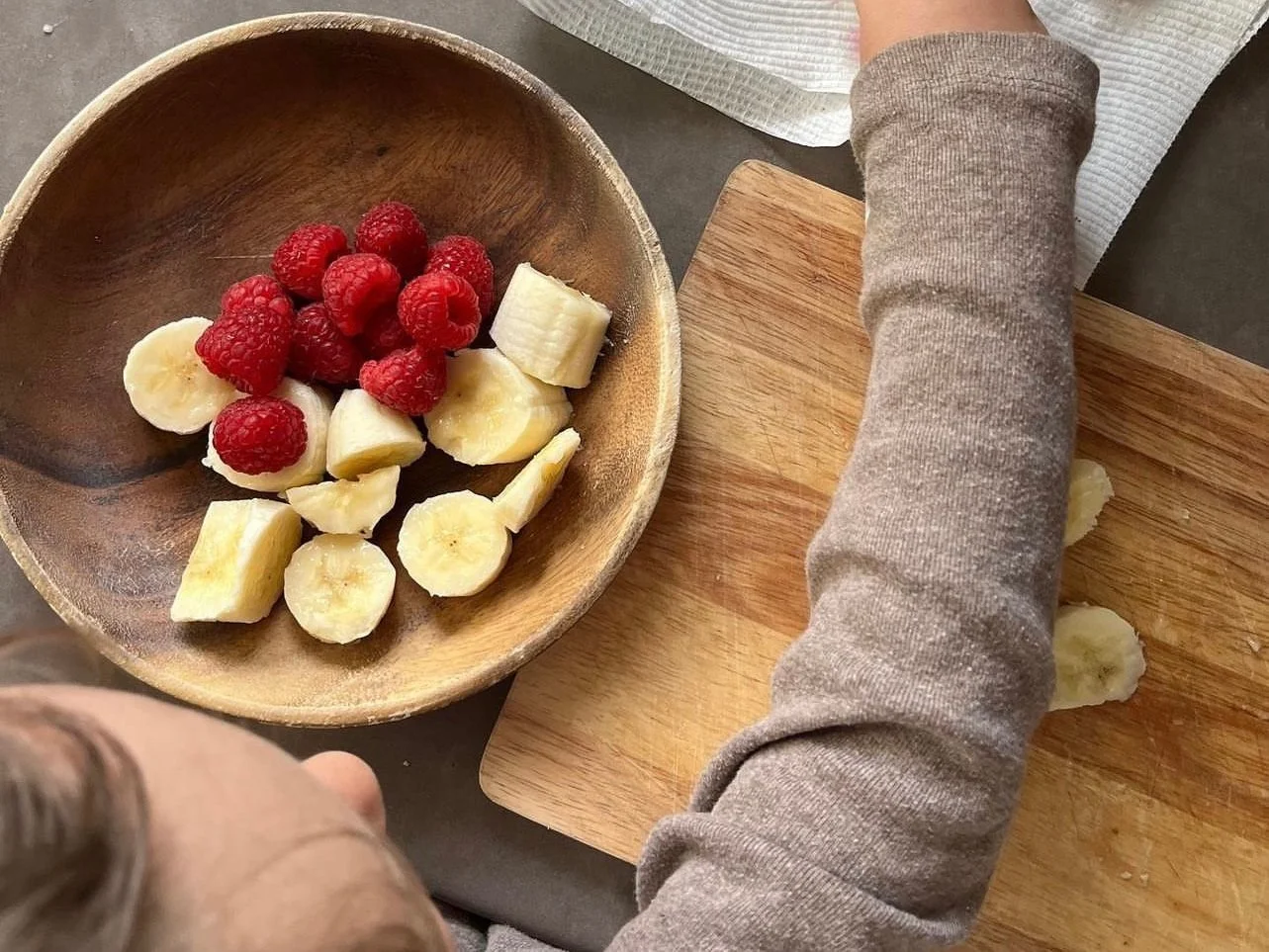Fats in Children's Diet
As kids returning back to school for another term, I feel it is a good time to talk about fats and which ones are healthy for our children.
Dietary fats are very important for your child’s health and development.
They are a source of energy
They are needed by the body to absorb vitamins A, D, E, and K
They are needed to make hormones that are essential for many different processes including growth, development and metabolism
Fats are needed to build cell membranes and nerve tissue (including the brain)
Some healthy fats (Extra Virgin Olive Oil) contain antioxidants that strengthen the immune system
They sustain the body and help kids feel less hungry outside of mealtimes
However, the type and amount of fat children eat is important…
Fats to Avoid:
Trans fats are found in deep fried takeaway foods and commercially baked products such as biscuits and pastries and are not always listed in the nutritional panel on food items. A “hidden” source is hydrogenated and partially hydrogenated vegetable oil.
Fats to favour:
Polyunsaturated fats include omega-3 and omega-6 fats. Omega-3 fats (DHA, EPA and ALA) play a
critical role in a toddler’s cognitive, brain and eye development. They also support cardiovascular health.
- Omega-3 fats are found in oily fish, eggs, linseed, walnuts, chia and flax seeds, hemp seeds
- Omega-6 fats are found in nuts, seeds, meat, poultry, fish and eggs.
Monounsaturated fats support a healthy cardiovascular system and can be found in olive oil, avocado, nuts and seeds.
We spoke to Anna from @smallbowl about how she encourages healthy eating in her house…
Fat and cholesterol play important roles in brain development. Healthy fats are a vital part of a child’s diet, and they should not be limited.
The best way to teach kids healthy eating habits is to set a good example yourself. I find that eating the same meal as the kids really encourages them to not only try new things but also eat a more balanced diet. If you wouldn’t eat it - don’t serve it to the kids.
My second biggest takeaway for feeding a family is VARIETY. Keep it interesting not only for the kids but also for you, the one cooking. The more excited you are about the food, the more likely kids are to try it. Even if they don’t like it the first time, gentle exposure helps kids to feel more comfortable with a type of food.
Try using a variety of colours, flavours, smells, textures, and consistencies and involve the kids when you are buying or preparing. I take my son Jack shopping with me when I only need a few things and he looks and asks questions about all the different fruits and vegetables. Usually, if he shows a big interest in something I will buy one and add it to a dish so he can taste it. I’ll usually get him to watch while I’m preparing it too so he has a greater understanding of what it is.
For example, the other day he was very keen on red cabbage. I don’t use it often and don’t really know what to do with it but I bought a small one and sliced it thinly and added it to our family stir-fry. He watched as I cut it and cooked it then tried it in his dinner. It was actually a great addition and we now call it rainbow stir-fry when we use it as it add such a bright colour to the dish.
Here are some other ways to encourage healthy eating:
Cook with your children and encourage them to feel different textures and taste different flavours.
While you prepare food together, talk with them about the food and the benefits of eating certain foods.
Don’t worry about putting ‘breakfast’ or ‘lunch’ labels on food. Food is food. If you feed your kids healthy food they can eat it any time of the day. Eggs for dinner, curry for breakfast. It doesn’t matter.
Provide variety - if you always cook with basmati rice, try wild rice. If you always eat chicken, try turkey.
Involve your kids in the supermarket or market shopping so they recognise foods that they can find in their meals. ‘Look mum there’s mushrooms in here like we saw at the market!’
Use Extra Virgin Olive oil as an alternative to other oils for cooking and baking.
If you’re in the habit of having toast every morning, try a variety of different spreads, cashew butter, avocado, hummus, tomatoes, and homemade jam.
Choose a variety of proteins, including meat and poultry, fish and seafood high in omega-3s, and vegetarian options, like beans and nuts.
Make it easy for yourself and cook carbohydrates, vegetables and protein all into one dish. For example, fried rice, bolognese, tray bake, stir fry, curry.
Pack lunches, snacks, and meals for family outings. This keeps you in control of what your family eats.
Have easy, quick lunch and dinner options in the fridge. For example pesto - for pasta, tray bake, frittata or on sandwiches with ham etc. hummus - as a snack, on a salad, as a dip with falafels etc.




